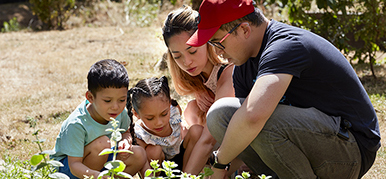Nature Recording Hub
Discover how to record the wildlife in your urban environment.

A range of wildlife surveys and activities which are great to do with kids in a variety of settings and seasons.
Download the full list (PDF 1.9MB), or browse the highlights below.
Discover how to record the wildlife in your urban environment.

Download the full list of surveys and ID guides for kids
Bat Conservation Trust
Spend an hour at dusk or dawn looking for bats and other nocturnal wildlife - in your garden, from your balcony or walking around your local area.
The survey can be done any time between April and October. You can submit your results online or by post.
Equipment: The survey form, pen, torch and a watch/phone.
Natural History Museum
Learn how to make a pitfall trap to catch insects and other invertebrates to identify.
Equipment: A trowel, a plastic cup or yoghurt pot and a tray to put your invertebrates in whilst you identify them.
OPAL
This identification chart covers insects, arachnids, molluscs, myriapods and crustaceans you are likely to find.
Equipment: A magnifyer and a glass jar would be useful.
OPAL
A guide to surveying hedgerows with survey forms included. The survey involves looking at the structure and management of the hedge, the shrubs and invertebrates present, and any other signs of wildlife using the hedgerow.
Equipment: ID guides, tape measure, magnifier and a pale collecting container (such as a white tray or a dustpan and brush). A pooter and spy pot are optional.
OPAL
The survey includes three activities: identifying and assessing general tree characteristics; recording the presence of any pests and diseases on oak, horse chestnut and ash trees; and recording six of the most serious pests and disease threats.
Equipment: The survey booklet, tape measure and a magnifying glass.
Natural History Museum and Earthwatch Institute
Understand more about earthworms in your local green spaces. The data collection for this citizen science project has ended, but the website still contains useful resources and activities.
The survey is best done in spring or autumn, which is when earthworms are most active.
Equipment: The survey pack, a spade or trowel, 2 x 500ml bottles of mustard water, clean water, large plastic bag, stopwatch, two containers to store worms in (eg yoghurt pots), 15ml vinegar.

Try these no-preparation activities, perfect for small or large spaces

This free downloadable toolkit lists activities and ideas that you can use with young people to explore nature in cities.